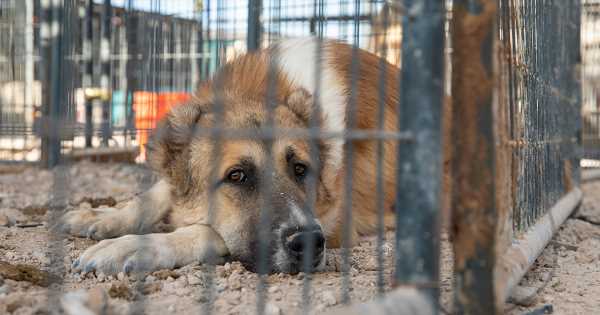
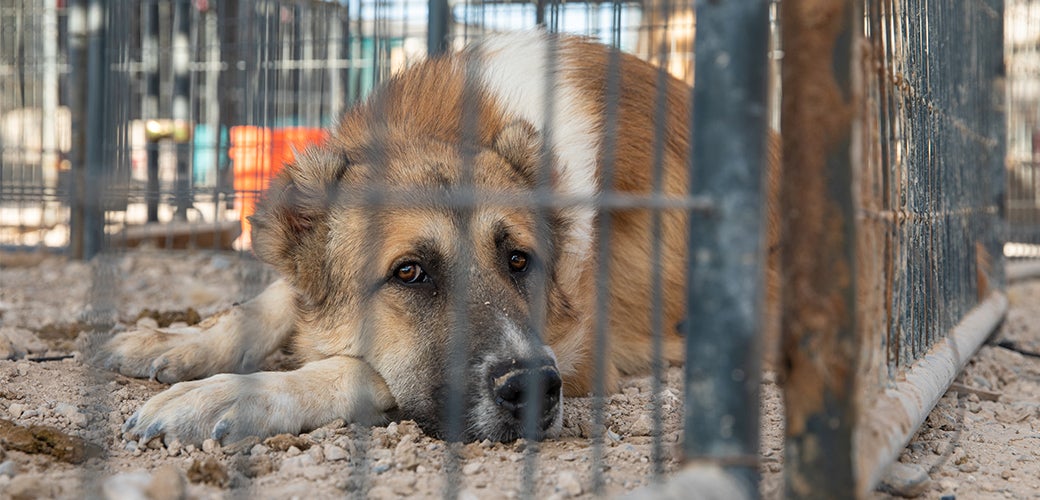
The ASPCA has been on the ground providing care for hundreds of dogs rescued from alleged cruelty in Pahrump, Nevada, since early September. Caring for so many dogs takes an incredible amount of manpower and resources. As our work continues, we wanted to give our supporters an inside look into a day in the life of a daily care responder for our cruelty response. Kirstin Burdett with the ASPCA Membership team spent just over a week with these dogs, volunteering her time to help us give them the best care possible.
See her account below!

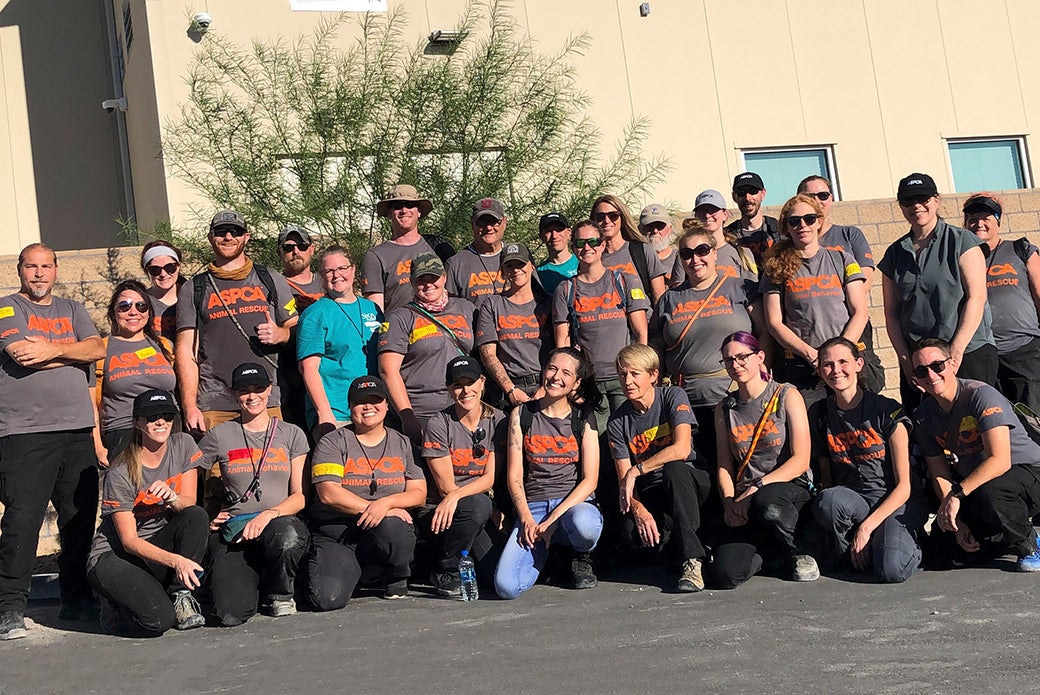
O
n day one, 7:00 AM approached and cars pulled into the Nye County Animal Shelter parking lot where I waited for our kick-off huddle. We gathered in a circle, and as everyone greeted each other, I found myself examining my peers’ attire, eager to confirm that I’d bought the right pants. Phew, I had!
Prior to deployment, responders were instructed to wear tactical or cargo pants, sturdy closed-toe shoes and an ASPCA t-shirt. I’d quickly learn that this is not for uniformity. Throughout the week, the pockets of my cargo pants would hold a notepad, protective gloves, sunscreen, Band-Aids, a portable radio, dog treats and a variety of pens and markers.
Our morning meeting was in this parking lot every day, and the captains of our medical, behavior, shelter care and placement divisions took turns delivering safety reminders, summarizing important protocols and preparing us for the work ahead. With responders rotating in daily, new folks were asked to share who we are, what we do and where we traveled from.
Around the circle, responders listed their hometowns in Georgia, Colorado, elsewhere in Nevada, California, New York, Rhode Island, Ohio, Tennessee and more. We’d come from all over the country, and it wasn’t just ASPCA staff there. Volunteers from other humane societies, shelter and rescue organizations, and even a handful of police officers were among the responders. One man from Seattle, retired from a long and rewarding career in telecommunications, was on his 23rd deployment for the ASPCA!
I was assigned to Shelter Support for the week and paired with one of the five groups whose responsibilities included feeding, cleaning and caring for the dogs. My Team Lead was halfway through her deployment rotation. A seasoned volunteer responder from Cape Cod, Massachusetts, her patience, wisdom and guidance were exactly what I needed.
The operation seemed to have a place and plan for everything. My Team Lead showed me the designated volunteer space and the medical space where dogs received urgent and routine care, like vaccinations, parasite treatments, wound care and relief from the desert sun. There were sheds and trailers where food and supplies were stored, and the outdoor space where the dogs were housed.
Hundreds of kennels stood in rows within a fenced space behind the shelter’s building with beautiful mountains in the distance. Few animal shelters in this country have the indoor facilities to accommodate the quantity of extra-large dogs, so an outdoor emergency shelter was constructed to hold them. The kennels were covered to protect dogs from the sun and makeshift pipes called “misters” drizzled the dogs with cool water in the afternoon. The puppies loved the misters and, miraculously, we were able to keep the air within kennels at or under a comfortable 70 degrees.

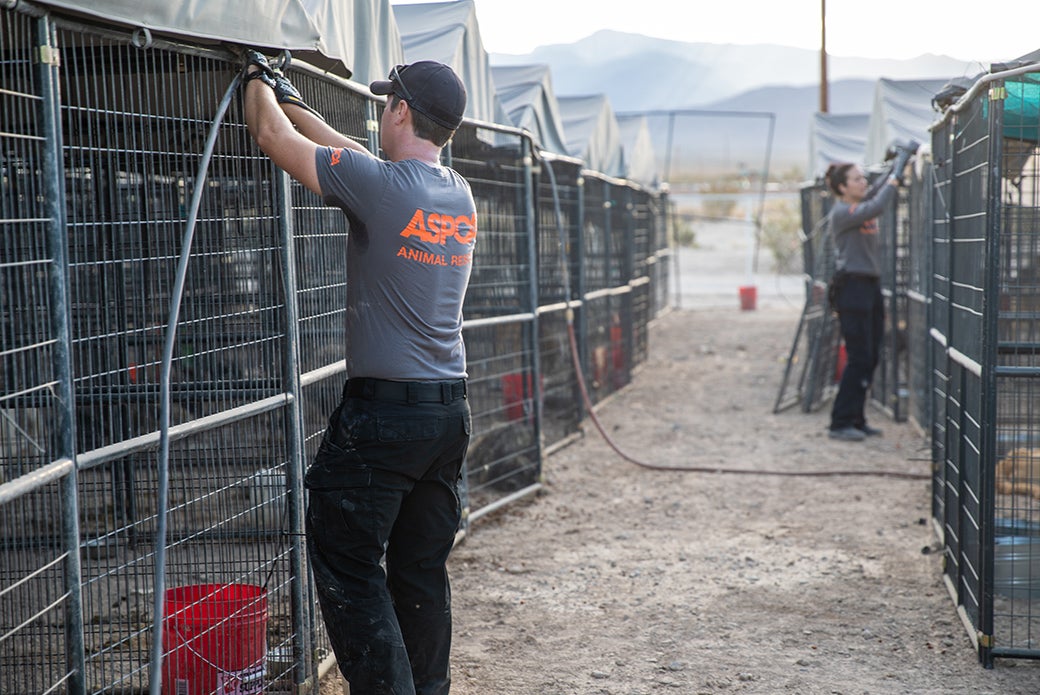
Each day, we’d load wheelbarrows with bags of dog food and a wagon held stacks of clean bowls and dozens of dog food cans—it’s unbelievable how much food we went through each day! We’d also gather tools to clean up whatever mess the dogs had made overnight and head to our assigned row of dogs.
One by one, each dog would get a clean bowl filled with food and refreshed buckets of cold water.

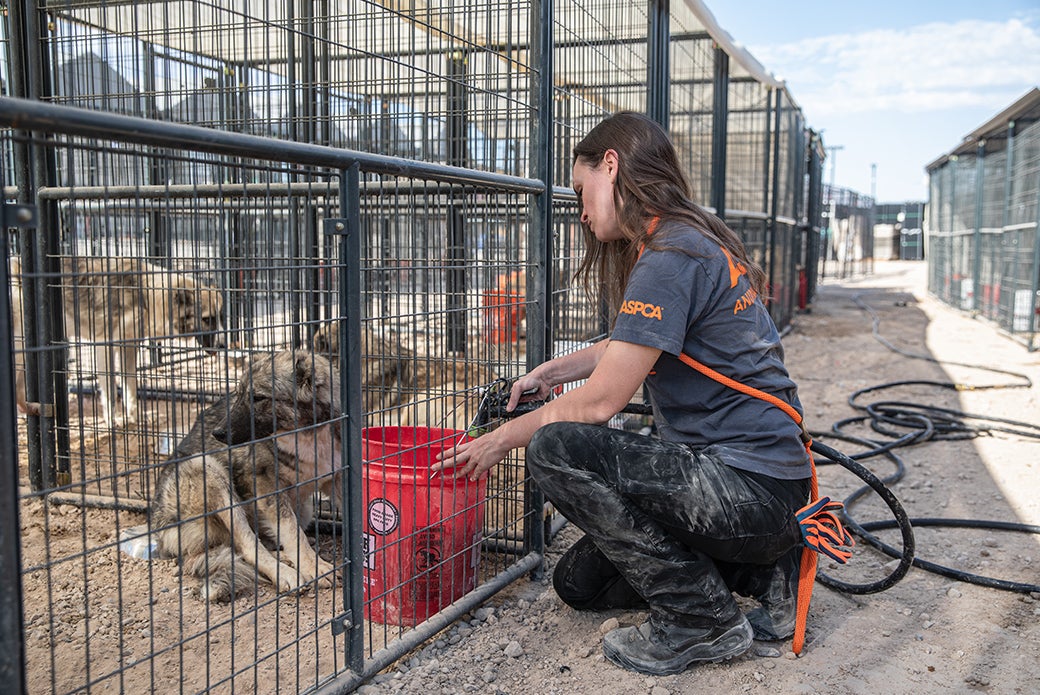
Of the hundreds of rescued adult dogs, all but a few feared us. As a result, it was common for the dogs to wait until we’d moved away from their kennels before they’d eat their meals. To effectively care for so many dogs, a log was posted on each kennel to chart different aspects of the corresponding dog’s activities. With a dry-erase maker, we noted how much food the dogs ate from their previous meal and what kind of food they received—some ate only dry food, some ate only wet food due to severe dental disease, and some picky eaters ate a mixture of both.
This would be our routine throughout the week, repeated again at dinnertime. After lunch, lots of water and my third application of sunscreen, we divided into groups to tackle housekeeping tasks. Always trying to outdo ourselves, some groups improved the misters and replaced worn sun shields, while other teams prepared enrichment activities like treat box puzzles, toys and, most popular, frozen “pupsicles.”
There was always work to be done!

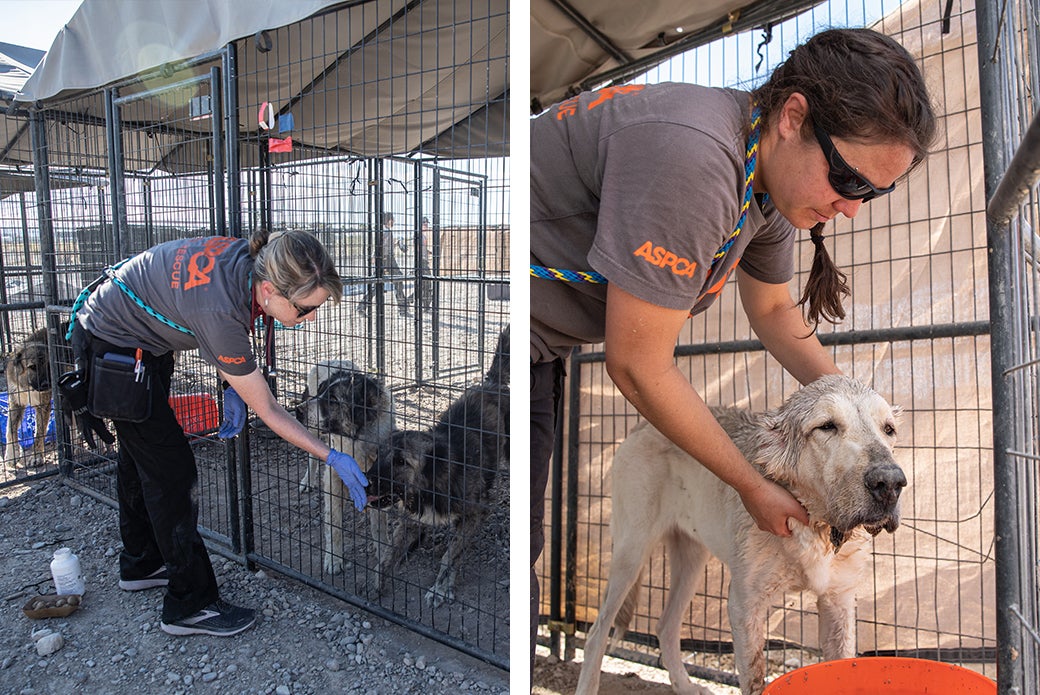
The days were long and laborious, but the energy was always positive because we knew what we were there to do: give these dogs the attention and care they deserved. We were rewarded with subtle signs of progress each day.
Our company and regular meals seemed to make the dogs more comfortable. By the end of my deployment, some who had feared eating with us nearby no longer hesitated to do so. Dogs who previously looked at their toys with confusion began pushing them around and tossing them into the air.

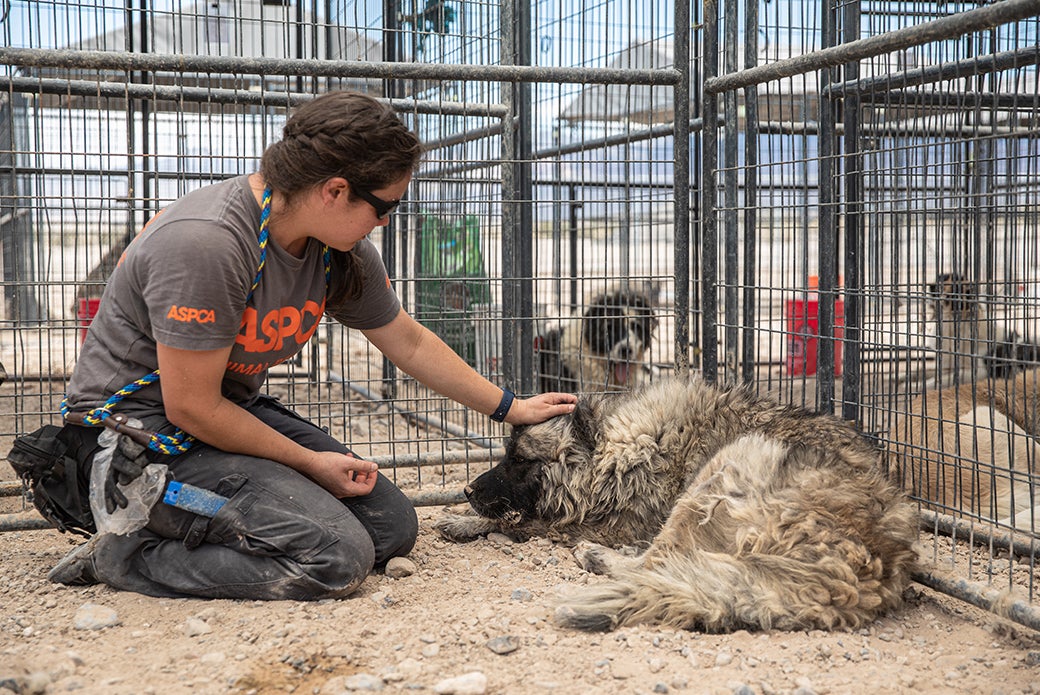
One of the oldest dogs won everyone’s hearts with his gentle demeanor and gray muzzle, and the puppies provided comic relief by playing in their water buckets. A few clever dogs learned that I couldn’t resist tossing them an extra treat every time I passed their kennels.
After the long, hard week, I was surprised by how difficult it was to leave. On my last day, I walked through the rows to say goodbye to a few of the dogs who made a lasting impression on me. I approached one of the cages and handed a timid dog a treat stick, which he brought to the back of his kennel. He dropped it on his bed, then returned to the door where I told him, “Be a good boy, I’ll miss you.” He licked the back of my hand, as if to say thank you, and returned to the treat on his bed.
My colleagues and friends are still on the ground in Nevada caring for dogs as the case continues. With your support, we can continue to be there for them and the many others who need us.
Source: Read Full Article
